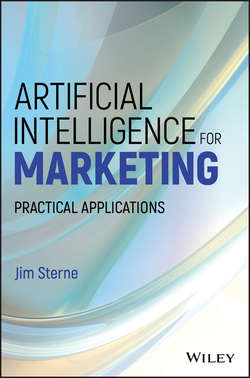Читать книгу Artificial Intelligence for Marketing - Sterne Jim - Страница 12
CHAPTER 1
Welcome to the Future
THE BRIGHT, BRIGHT FUTURE
ОглавлениеArtificial intelligence will give you the ability to match information about your product with the information your prospective buyers need at the moment and in a format they are most likely to consume it most effectively.
I came across my first seemingly self‐learning computer system when I was selling Apple II computers in a retail store in Santa Barbara in 1980. Since then, I've been fascinated by how computers can be useful in life and work. I was so interested, in fact, that I ended up explaining (and selling) computers to companies that had never had one before, and programming tools to software engineers, and consulting to the world's largest corporations on how to improve their digital relationships with customers through analytics.
Machine learning offers so much power and so much opportunity that we're in the same place we were with personal computers in 1980, the Internet in 1993, and e‐commerce when Amazon.com began taking over e‐commerce.
In each case, the promise was enormous and the possibilities were endless. Those who understood the impact could take advantage of it before their competitors. But the advantage was fuzzy, the implications were diverse, and speculations were off the chart.
The same is true of AI today. We know it's powerful and we know it's going to open doors we had not anticipated. There are current examples of marketing departments experimenting with some good and some not‐so‐good outcomes, but the promise remains enormous.
In advertising, machine learning works overtime to get the right message to the right person at the right time. The machine folds response rates back into the algorithm, not just the database. In the realm of customer experience, machine learning rapidly produces and takes action on new data‐driven insights, which then act as new input for the next iteration of its models. Businesses use the results to delight customers, anticipate needs, and achieve competitive advantage.
Consider the telecommunications company that uses automation to respond to customer service requests quicker or the bank that uses data on past activity to serve up more timely and relevant offers to customers through e‐mail or the retail company that uses beacon technology to engage its most loyal shoppers in the store.
Don't forget media companies using machine learning to track customer preference data to analyze viewing history and present personalized content recommendations. In “The Age of Analytics: Competing in a Data‐Driven World,”5 McKinsey Global Institute studied the areas in a dozen industries that were ripe for disruption by AI. Media was one of them. (See Figure 1.1.)6
Figure 1.1 A McKinsey survey finds advertising and marketing highly ranked for disruption.
